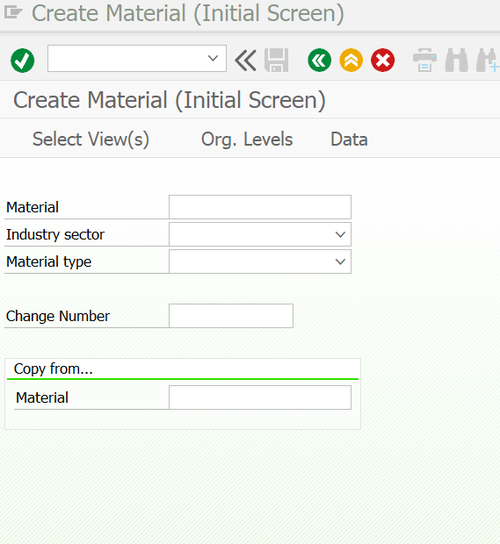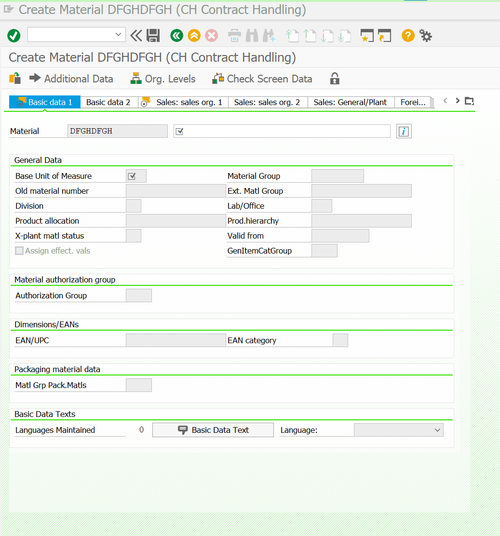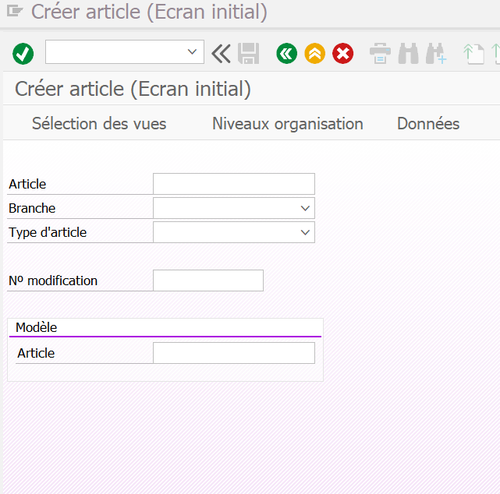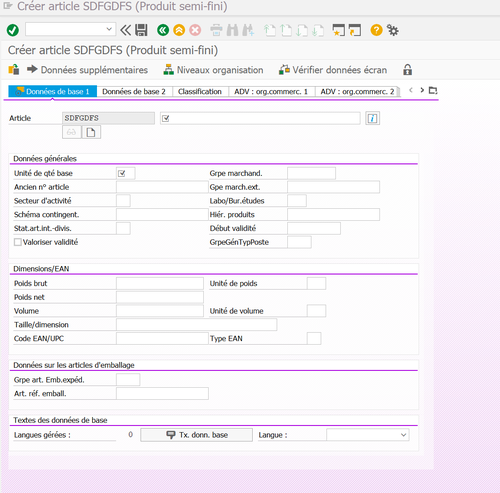Master data explained using a sales process
In times of digitalization, data is an important corporate asset. The following principle applies - the "cleaner" and the more comprehensive the data, the higher the potential and more trouble-free the work together with the data. Therefore , there is a high potential in a well-maintained database.
In this blog post, we will deal with master data and explain it in more detail using examples. But before we get into master data, we first need to ask ourselves this question:
What is master data?
Master data is data which is stored in systems for a longer period of time and is available to all authorized users and applications.
Basically there are hundreds of different master data types in SAP®. These are being created and used differently depending on the industry. The most important master data, which is used in almost every sales process, is the material master data, customer master data, vendor master data and the sales documents. We will use this master data in order to illustrate the flow of a sales process and thus demonstrate the importance of master data. Before we can simulate a sales process, we must first create master data.
We took a closer look at the question "What is master data in SAP?" in another blog post. Here is an overview of the different types of master data.
How do I create master data?
For each type of master data, there are separate transactions in SAP®in order to create, maintain and display it. The individual master data transactions are listed in SAP® forums and can be searched out as need be.
In our example we start with the creation of the material. Material management is at the beginning of the supply chain in SAP®, before you can sell something, it has to exist.
Step-by-step guide: Creation of a material
Step 1: Materials are created in SAP® in transaction MM01, MM02 maintained, MM03 displayed. Therefore we call transaction MM01 first.

Step 2: In our example we create the material "Still_Water" which is meant to be sold to bigger discounters. In this case , we name our material "Water_Still" and select Retail as the industry, since we want to sell our material. As material type we select Beverages and press Enter.
Step 3: The view selection opens. In our case, we select the view "Basic data 1" and "Sales: Sales org data 1".
Note: What is a view? A material has different attributes. These attributes can be quantity, unit of measurement, etc. These attributes are grouped in so-called views.
Step 4: Once these are selected, the plant, sales organization, and distribution channel related to the material must be selected.
Step 5: Once this is done, we come to the actual creation of a material:

Now this picture may seem daunting to some. SAP® wants to allow the creator of the material to describe it as accurately as possible. In the tabs we see our selected views "Basic data 1" and "Sales: SalesOrg 1" highlighted. By pressing a button on the view selection, the other tabs can be hidden. But if you don't know which attributes are contained in which view, you still have the possibility to fill in the attributes in other not selected views.
It is not obligatory to fill in all fields. Depending on the view selection, there are essential fields that must not be obsolete. For our selected basic data, the fields would be: ''Description of the material" and ''Base unit of measure". As description, in our example, we record that the water is intended for sale. As the base unit of measure, we select milliliters.
In the tab "Sales: SalesOrg 1" we need to fill out the field "Tax classification". Once we have fcompleted the essential fields, we save our entries and our material is created. The record that is now saved can be found again in the table ‚‘MARA“ and can be deleted there if necessary.
Final step: Creation of a debtor
Now that our material is created, we need a buyer for our material. As with the materials, there are separate transactions in SAP for the customers to create (XD01), maintain (XD02) and display (XD03) them.
Therefore, we now call up transaction XD01 to create our first customer.

Here we have to fill out the field "Account group" n order to define what kind of customer is required. For our account group, we select the option "Customer General" and use it to create our customer.

After you have created the customer, similar to the creation of the material, an initial screen will appear where you can/must specify more detailed data about the customer.
The fields that must not be obsolete are: Name (Where only the first or last name is sufficient), the (place of) residence and the country. We are able to create our customer after filling in the fields. However, we would like to add a valid bank account to ours. To do this, we go to the Payment tab, where we can specify one or even more bank details.
After we have created a bank account by specifying the country, the bank key, the bank account and the account holder, we save our data by pressing the Save button. With this we have created and saved our debtor. The table in which the saved data is now located is the "KAN1".
How are the master data related?
Now we have our material "Water_Still" and our customers, which are marked with a number. How could these master data be related? Well, if our customer wants to buy our material, an order can be easily created via the transaction VA01 that connects the two parties. It will be indicated what type of order it is and what materials and debtors are needed. The number of pieces required is specified and the total base quantity is calculated on this basis. This information can now be sent to the warehouse, for example, to get the material ready for shiping and finally to send it off.
This process can be applied to all areas in the company with different master data. Master data is created, which is used for a longer period of time and then used with it, as in our example, by means of an order. You can see that whole processes within a company are based on master data and are therefore essential.
Master data maintenance tasks
If you hold master data, it is essential to maintain it and keep it up to date, otherwise enormous problems can occur. One of the typical master data maintenance tasks is to prevent errors and maintain the data in a central system.
If master data is stored multiple times on different systems in a company and is not being synchronized at the same time, drastic errors can occur. For example, if the extension of a product is available in the sales department but not in the production system and a customer receives an incorrect material with an incorrect invoice.
Why is master data maintenance important?
In such a scenario, costs would be incurred and a loss of reputation would take place. Of course, in some scenarios it is not necessary to maintain the master data. SAP is very cooperative with other applications, so a supermarket cashier is not forced to maintain the associated master data for every product being sold. Nevertheless, this is not always the case. In addition, good master data maintenance prevents data redundancy and effort in data entry. All these points are important master data maintenance tasks, which are relatively the same across industries.
One solution to this would be to run the master data maintenance and related tasks on a central system (which does not serve as a sales system) in order to prevent duplications and inconsistencies, etc. For the maintenance of master data, each master data type has its own transaction, as mentioned above.
A good master data maintenance is therefore important for efficient processes, satisfied customers and a reliable analysis of the individual processes. So keep an eye on your master data maintenance tasks!
How do I send my master data?
If all departments stand in a single system, it is not necessary to send the master data, because all departments have access to it. However, if this is not the case and individual departments are bound by a process but not in one system, it is necessary to send the master data.
Now you ask yourself, how do I send my master data? This is done with so-called IDocs. IDocs can be thought of as an envelope that is transported from one system to another, with its contents, by means of an RFC connection.
Should you be interested in the topic of IDocs, there is a separate blog entry on our site.
Is it possible to create master data faster?
The whole process of master data creation sounds like a big effort if it is necessary to create every single customer and material individually.
From practice for practice: Libelle MasterDataServicesSuite (MDSS) has been developed in order to meet the needs of all those who work with master data in their daily operations or in migration projects. Our toolbox can be easily operated via the central cockpit and offers six tools that cover all master data maintenance tasks, either individually or in combination.
Recommended articles
All blog articles